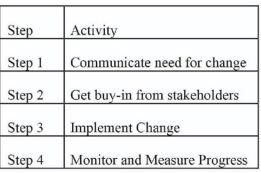In an age of constant change and uncertainty, organisations must be ready to adapt to whatever challenges may arise. It is important to identify strategies and leadership skills necessary to manage teams through turbulent times.
Defining turbulent times for organisations
Turbulent times can be defined as periods of significant change and upheaval that have the potential to disrupt the operations of an organization. These can include economic downturns, technological disruptions, or industry-wide changes.
Impact on organisations
Turbulent times can have a number of negative impacts on organizations, including decreased productivity, financial strain and a loss of customer confidence.
Opportunities for change
However, this period can also be an opportunity for organizations to reevaluate their operations and make changes that will help them be more competitive in the long term.
Opportunities for change
However, this period can also be an opportunity for organizations to reevaluate their operations and make changes that will help them be more competitive in the long term.
Organizational Diagnosis.
“You can’t manage what you don’t measure.” – Peter Drucker
Assessing the current state of an organisation is an essential step in identifying areas of improvement and developing a plan for change. This process includes analyzing data, reviewing processes and systems, and identifying performance gaps.
Identify key performance indicators (KPIs)
Determine the KPIs that are most critical to the success of your organization, such as productivity, revenue or customer satisfaction.
Review internal processes
Analyze key processes to determine where inefficiencies exist that may be hindering operations and identify areas that require improvement.
Identify performance gaps
Use the data collected to identify areas of improved performance and specify the actions required to close performance gaps.
Change Management Strategies.
| Step | Activity |
| Step 1 | Communicate need for change |
| Step 2 | Get buy-in from stakeholders |
| Step 3 | Implement Change |
| Step 4 | Monitor and Measure Progress |
Change management is the process of managing the transition of an organization from its current state to a desired future state. Being able to communicate the need for change, obtaining buy-in from stakeholders, implementing the change and monitoring progress are essential for success.
Leadership in turbulent times
Leadership during turbulent times requires a combination of resilience and adaptability. Leaders must be able to make informed and timely decisions under pressure while inspiring and motivating their team.
Importance of Resilient and Adaptive Leadership
Adaptive leaders understand the importance of aligning their organization with the changing circumstances, while resilient leaders remain steadfast in their approach in the face of challenges.
Developing leadership skills for turbulent times
Leaders must cultivate the skills that will enable them to navigate and lead through change, including strong communication, problem-solving, and decision-making skills, as well as the ability to stay focused and execute well.
Leading by example
Leaders must also serve as role models for their teams by demonstrating a positive attitude, a willingness to embrace change, and a commitment to the success of the organization.
Managing People in Turbulent Times
Managing people through turbulent times can be challenging. To maintain a productive and motivated workforce, leaders must provide support, communicate clearly, address conflicts and challenges, and maintain morale.
Supporting employees through change
Provide employees with the resources and guidance they need to successfully navigate the changes and challenges that are occurring.
Maintaining employee morale and motivation
Keep team members motivated by recognizing their contributions, creating opportunities for growth and learning, and maintaining a positive work environment.
Addressing conflicts and challenges
Resolve conflicts quickly and effectively and provide training where necessary to ensure that everyone is equipped with the skills to navigate challenges.
Conclusion
Managing organizations in turbulent times requires a focused approach to assessing the current state of an organization, developing effective change management strategies, harnessing the power of effective leadership, and managing people effectively. By following these strategies, organizations can successfully navigate through uncertainty and come out stronger in the long run.
The writer is a Lead Senior Management Consultant with Deons Strategic Consulting Partners International.










